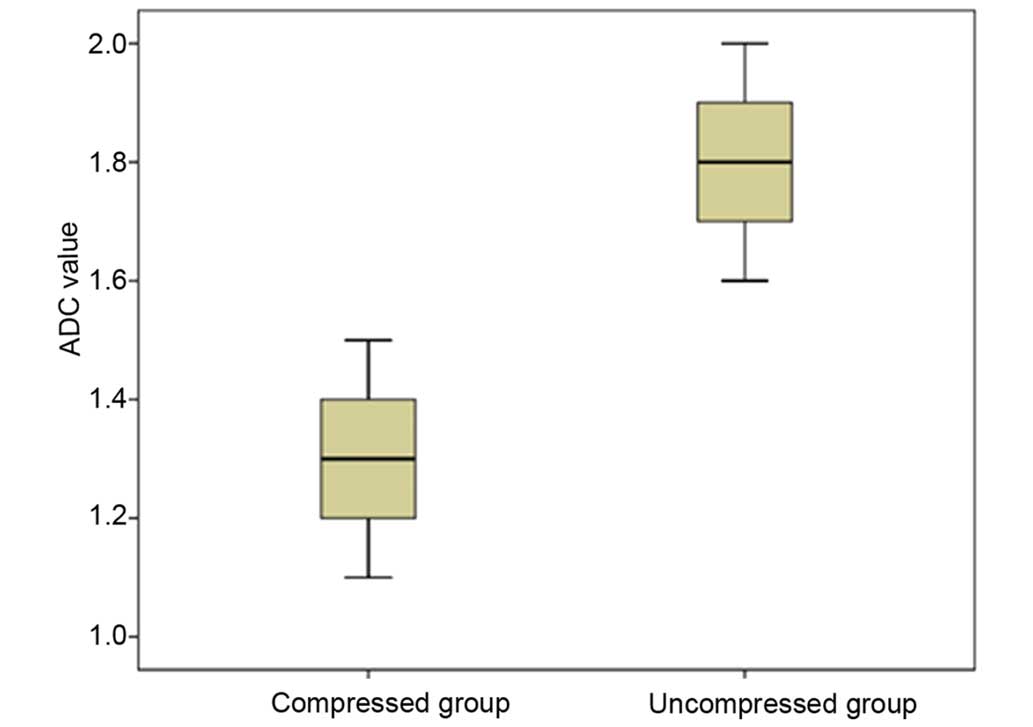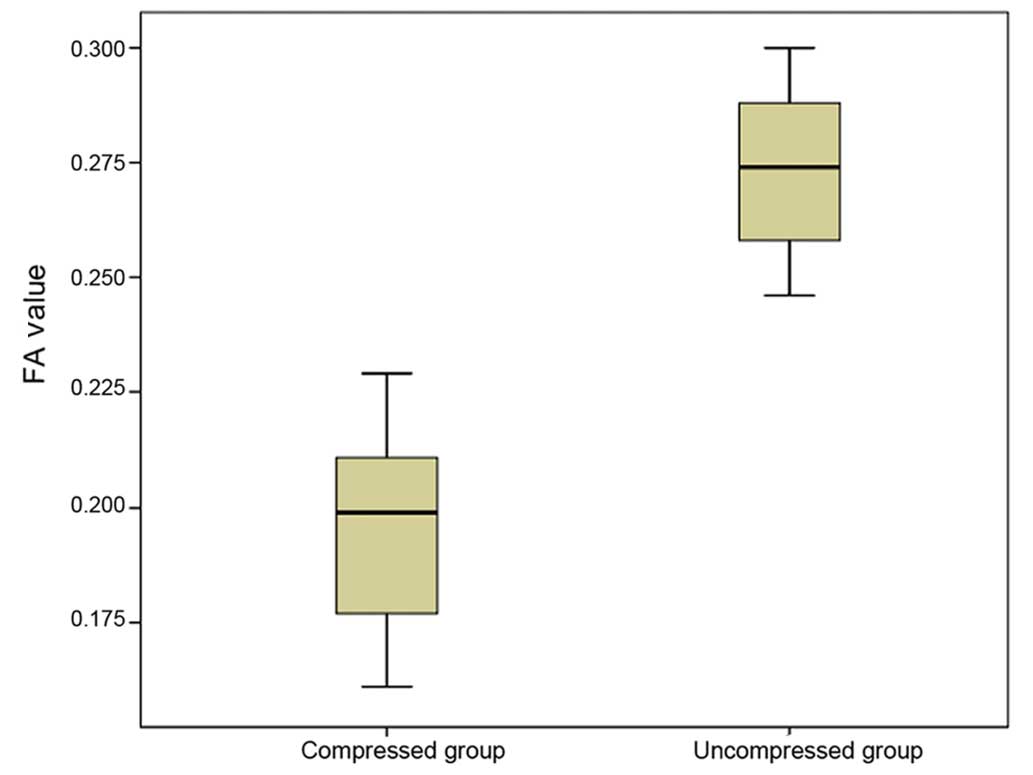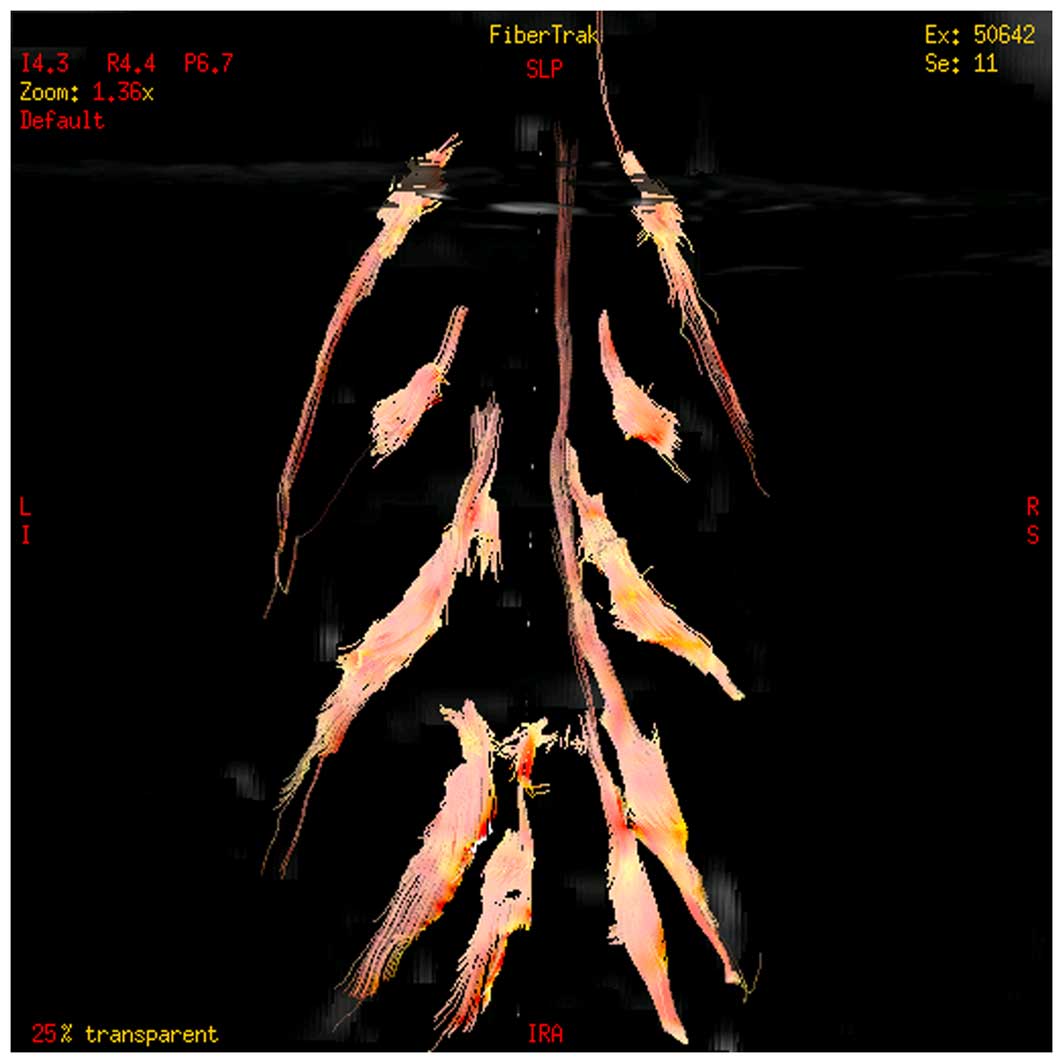Study on lumbosacral nerve root compression using DTI
- Authors:
- Published online on: August 2, 2016 https://doi.org/10.3892/br.2016.734
- Pages: 353-356
Metrics:
Total
Views: 0 (Spandidos Publications: | PMC Statistics:
)
Total PDF Downloads: 0 (Spandidos Publications: | PMC Statistics:
)
Abstract
Diffusion tensor imaging (DTI) can objectively describe the distribution of nerve roots in morphology, and provide a set of objective reference data on the quantitative indicators. The present study aimed to investigate the value of DTI in lumbosacral nerve root compression in patients with lumbar intervertebral disc degeneration. DTI was performed in 45 patients with lumbar intervertebral disc degeneration. Apparent diffusion coefficient (ADC) and fractional anisotropy (FA) values were measured in compressed and normal nerve roots. Fiber tracking imaging was also applied to observe the lumbosacral nerve roots. ADC value was significantly lower in the compressed group (1.314±0.14 mm2/sec) compared to in the uncompressed group (1.794±0.11 mm2/sec) (P<0.05). The FA value was significantly lower in the compressed group (0.196±0.020) compared to the uncompressed group (0.272±0.016) (P<0.05). DTI can evidently reveal the compressed nerve roots. DTI could be used to evaluate the lumbosacral nerve injury in patients with lumbar intervertebral disc degeneration to quantitatively assess nerve roots.














